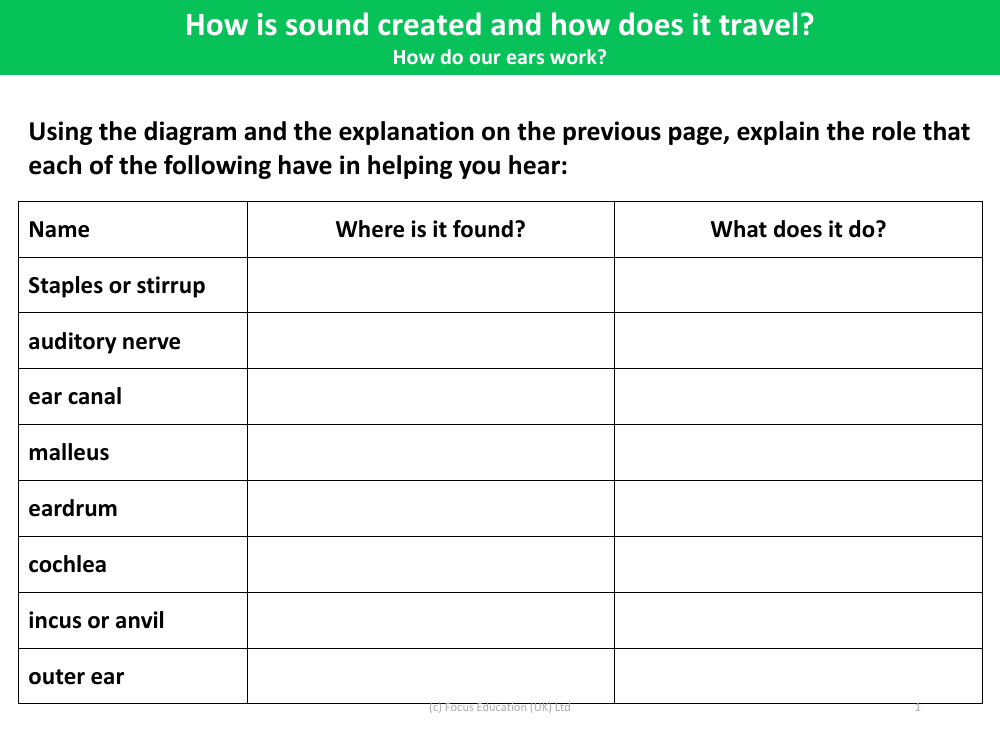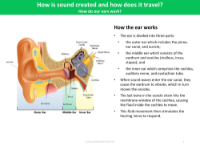What do different parts of our ears do? - Worksheet

Science Resource Description
The human ear is a complex system that enables us to detect and interpret sound. Each part of the ear plays a specific role in this process. The 'stapes' or 'stirrup', found in the middle ear, is the smallest bone in the human body and works by vibrating to transmit sound from the eardrum to the inner ear. The 'auditory nerve' is responsible for carrying electrical signals from the inner ear to the brain, where they are interpreted as sound. The 'ear canal' is a tube-like structure that channels sound waves from the outer ear to the eardrum. The 'malleus', another tiny bone in the middle ear, is attached to the eardrum and moves in response to sound, passing vibrations to the 'incus' or 'anvil'.
The 'eardrum', or tympanic membrane, vibrates when sound waves reach it, initiating the process of hearing. The 'cochlea', a spiral-shaped organ in the inner ear, is filled with fluid and lined with tiny hair cells that move in response to the vibrations, converting mechanical energy into electrical signals. The 'incus' or 'anvil', positioned between the malleus and stapes, transmits vibrations from the malleus to the stapes. Lastly, the 'outer ear', which includes the pinna and ear canal, collects sound waves and directs them towards the eardrum. Sound is created when objects vibrate, producing sound waves that travel through the air or other mediums. Our ears capture these waves, transforming them into signals that our brains can understand as distinct sounds.




